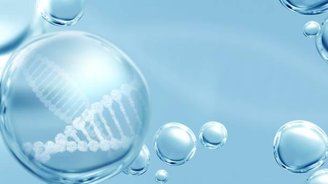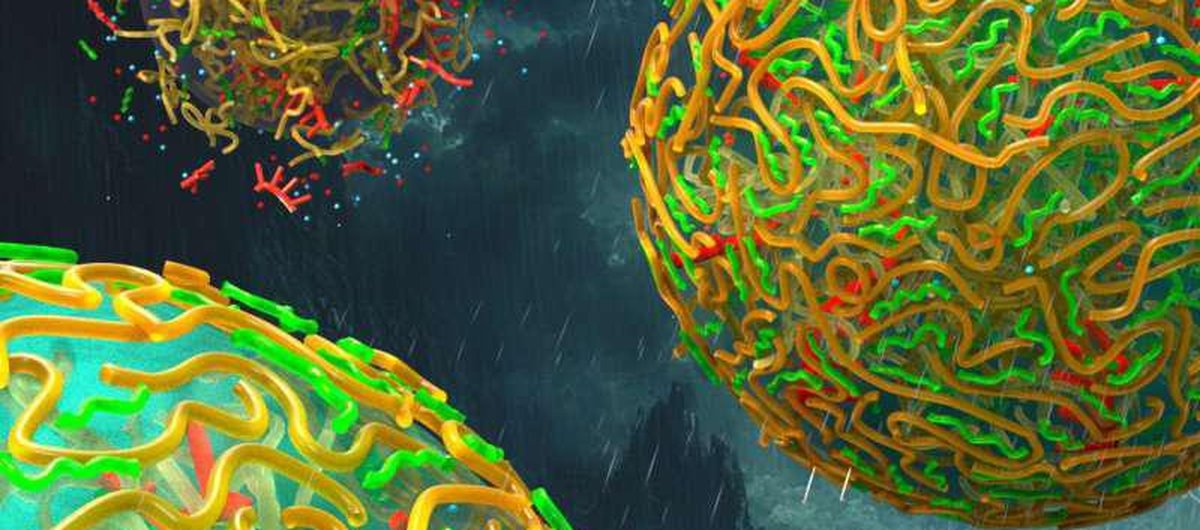One of life’s greatest mysteries, its early organization into tightly packed packets of RNA droplets (protocells), has received a new explanation in a new paper published in the journal Science Advances. The authors are engineers from the University of Chicago Pritzker School of Molecular Engineering and the University of Houston Department of Chemical Engineering, and biologists from the UChicago Department of Chemistry.
“This is a different and novel observation,” one of the co-authors, UChicago PME Dean Emeritus Matthew Tirrell, said in a press release.. In fact, interdisciplinary work suggests that: rainwater may have helped form a reticular membrane around primitive protocells.
The event, which occurred 3.8 billion years ago, has been described as a fundamental milestone in the evolution of life on Earth, as it facilitated the transition from simplified structures containing RNA to more complex life forms. The research works with the concept of “coacervated RNA droplets”, small spheres that form naturally when single-stranded molecules and other organic compounds aggregate in an aqueous environment.
RNA hypothesis as the origin of life
Although these coacervate droplets, which separate themselves from water like oil drops, were already considered suitable as the first protocells, they were paradoxically soon discarded because of their extreme competence. Any of these RNA spheres with potentially beneficial pre-life mutations would soon replicate that advantage with their “peers.”.
Soon all will be equal, but what seems advantageous will soon become detrimental, because without differentiation there is no competition. This means there will be no evolution of any kind, namely life. To solve this molecular engineering problem, the team turned to Nobel Prize-winning biologist Jack Szostak.
In the early 2000s he stated: RNA, not DNA, will be the primitive biological material to develop on our planetAccording to Aman Agrawal, the first author of the paper, “it’s like the chicken and the egg problem. What came first?” While DNA is the molecule that encodes information but does not perform any function, proteins perform functions but do not code for any transferable genetic information.
The raindrop as an organizer of primitive RNA
In the current study, the authors “bought in” to Szostak’s idea that RNA came first. After all, Agrawal argues, RNA is a molecule that can encode information, like DNA does, has the advantage of folding into genetic structures similar to proteins, and is capable of catalysis. Therefore, coacervate droplets containing early forms of RNA would be the best candidates for the first protocells.
But a 2014 paper by Szostak would challenge this theory with an undeniable argument: “You can make all kinds of droplets from different types of coacervates, but they don’t retain their separate identities. They tend to change their RNA content a lot. “Quick. This is a long-standing problem,” the biologist explained.

The solution to this obstacle came about by chance, when Agrawal began transferring coacervate droplets into distilled water while doing doctoral research at the University of Houston that had nothing to do with the origins of life. “It’s a very interesting thing to do,” he said over lunch with his former advisors, Alamgir Karim and Matthew Tirrel. Investigating the effects of distilled water on coascervegetal droplets as a possible origin of life on Earth.
And where might distilled water have come from 3.8 billion years ago, he asked. “From rainwater,” Karim replied automatically.
Using current rainfall to prove origin of life
With Karim’s “eureka” response, Tirrell brought Agrawal’s distilled water research to Szostak, who had recently returned to UChicago to lead a project called the Origins of Life Initiative.
Agrawal, who was already working on Szostak’s RNA samples, discovered that transferring coacervate droplets to distilled water increased the RNA exchange time from minutes to a few days, enough time for mutation, competition, and evolution to occur. But there was a problem highlighted in the peer review: While Agrawal used deionized water, prebiotic rains were probably too acidic.
Starting with the idea that there is nothing more similar to rain than rain, the authors collected rainwater from Houston outside the lab in a bottle and repeated the tests. Despite a difference of 750 million years, they found the same results.
Liked the content? Stay up to date with more information like this about the origin of life on our planet on TecMundo. Until later!
Source: Tec Mundo
I’m Blaine Morgan, an experienced journalist and writer with over 8 years of experience in the tech industry. My expertise lies in writing about technology news and trends, covering everything from cutting-edge gadgets to emerging software developments. I’ve written for several leading publications including Gadget Onus where I am an author.












